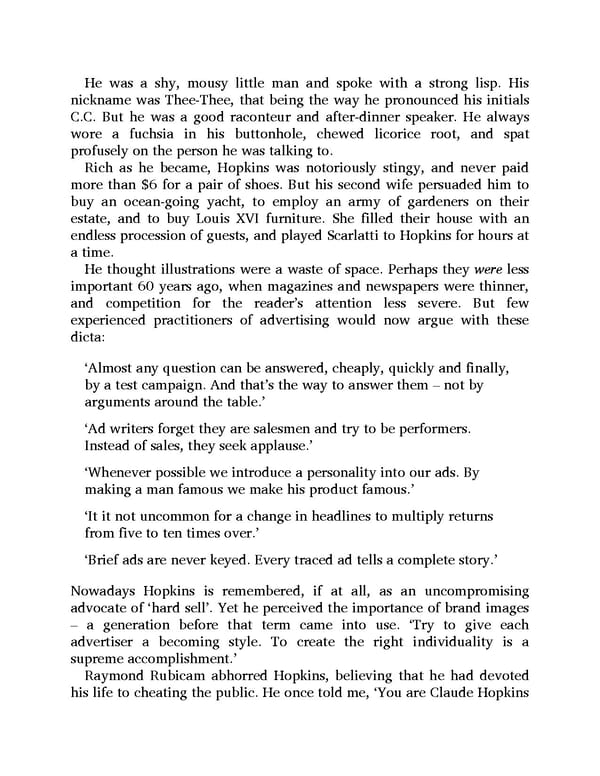He was a shy, mousy little man and spoke with a strong lisp. His nickname was Thee-Thee, that being the way he pronounced his initials C.C. But he was a good raconteur and after-dinner speaker. He always wore a fuchsia in his buttonhole, chewed licorice root, and spat profusely on the person he was talking to. Rich as he became, Hopkins was notoriously stingy, and never paid more than $6 for a pair of shoes. But his second wife persuaded him to buy an ocean-going yacht, to employ an army of gardeners on their estate, and to buy Louis XVI furniture. She filled their house with an endless procession of guests, and played Scarlatti to Hopkins for hours at a time. He thought illustrations were a waste of space. Perhaps they were less important 60 years ago, when magazines and newspapers were thinner, and competition for the reader’s attention less severe. But few experienced practitioners of advertising would now argue with these dicta: ‘Almost any question can be answered, cheaply, quickly and finally, by a test campaign. And that’s the way to answer them – not by arguments around the table.’ ‘Ad writers forget they are salesmen and try to be performers. Instead of sales, they seek applause.’ ‘Whenever possible we introduce a personality into our ads. By making a man famous we make his product famous.’ ‘It it not uncommon for a change in headlines to multiply returns from five to ten times over.’ ‘Brief ads are never keyed. Every traced ad tells a complete story.’ Nowadays Hopkins is remembered, if at all, as an uncompromising advocate of ‘hard sell’. Yet he perceived the importance of brand images – a generation before that term came into use. ‘Try to give each advertiser a becoming style. To create the right individuality is a supreme accomplishment.’ Raymond Rubicam abhorred Hopkins, believing that he had devoted his life to cheating the public. He once told me, ‘You are Claude Hopkins
 Ogilvy on Advertising Page 289 Page 291
Ogilvy on Advertising Page 289 Page 291